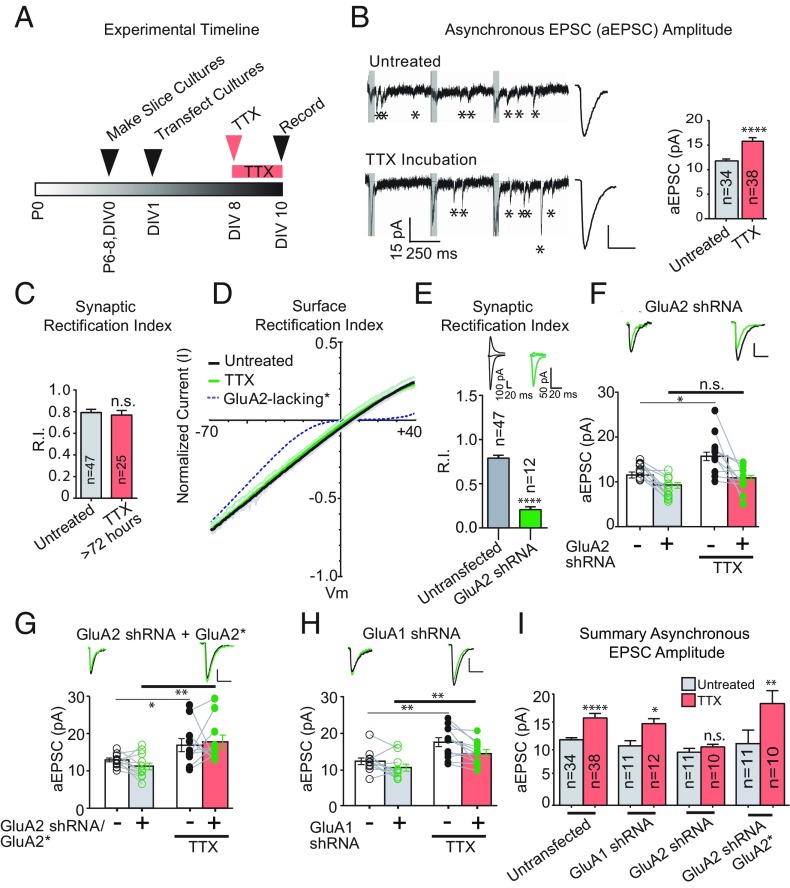Fig. 1.
GluA2, not GluA1, is necessary for homeostatic synaptic scaling of quantal size. (A) Timeline of experiments. (B, Left) Sample traces of aEPSCs showing scaling of aEPSC amplitude with TTX treatment. The gray box shows the synchronous component of EPSC that is not analyzed. (B, Right) Averaged aEPSCs from TTX-treated and untreated control neurons. The bar graph shows averaged aEPSC amplitudes. (C) Synaptic rectification of AMPARs with or without TTX treatment (>72 h; Methods). (D) Surface rectification of AMPARs with and without TTX treatment. (E) Synaptic rectification of paired AMPA EPSCs in control neurons and neighboring neurons transfected with an shRNA against GluA2. (F) Paired asynchronous recordings without and with TTX treatment in control neurons and neighboring neurons transfected with GluA2 shRNA. Black, control; green, transfected. Untreated sample traces are at the top left, and TTX-treated sample traces are at the top right. (G) shRNA-insensitive GluA2 rescue under the same treatment conditions as in F. *Indicates shRNA resistance. (H) GluA1 shRNA under the same treatment conditions as in G. (I) Summary graph indicating unpaired scaling data, within the same transfection conditions. Significance was measured across treatment conditions. (Scale bars: 5 pA and 20 ms unless noted otherwise.) *P < 0.05; **P < 0.01; ****P < 0.0001; n.s., not significant.

